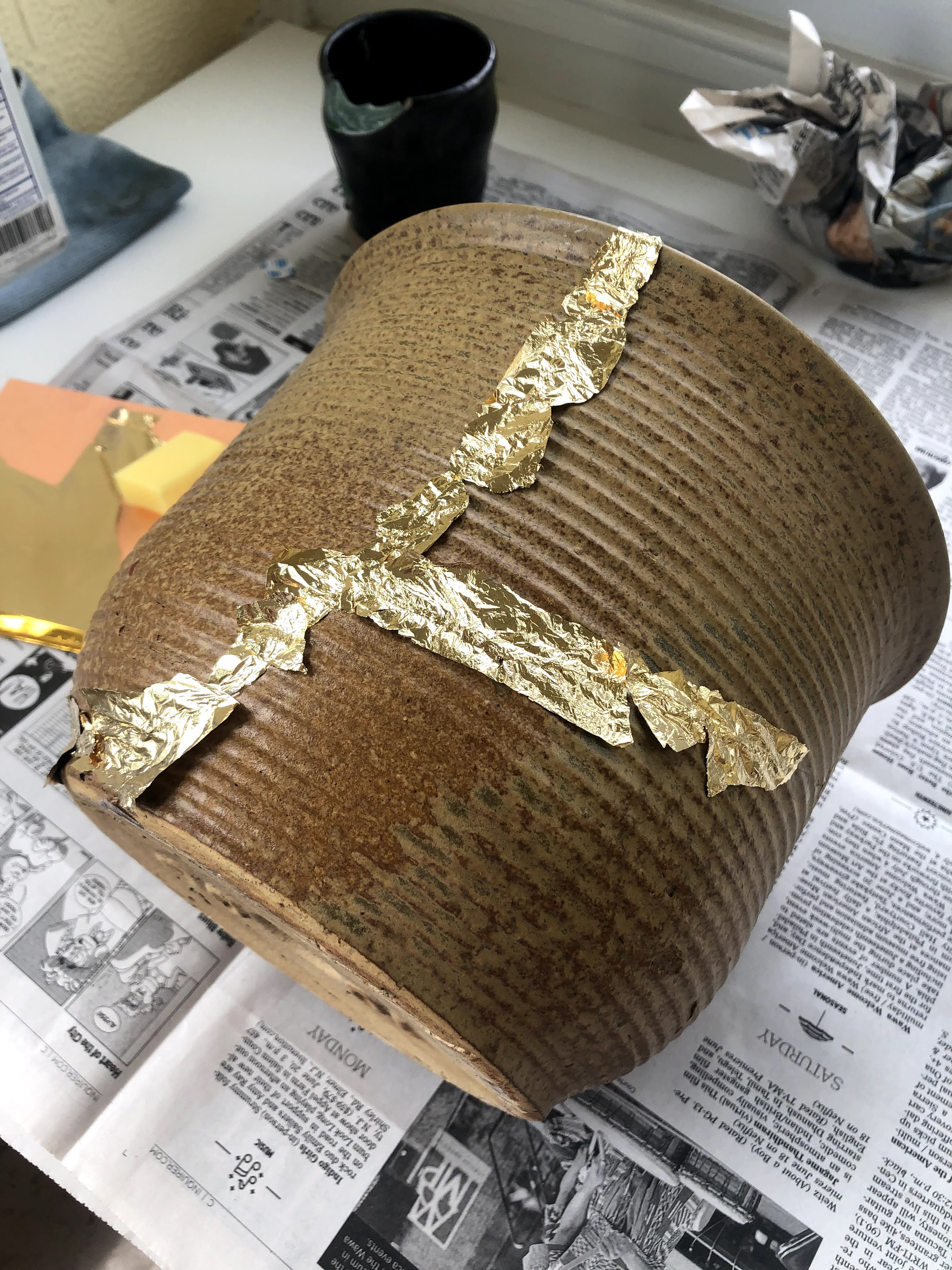What is Kintsugi?
I just finished a summer course at Villanova entitles Creativity in the Contemplative Life. The class took a deep dive into contemplative practices to explore ways of praying, wisdom, and deepening our relationship with God. We experimented with walking meditations, photography, centering prayer and many other art forms that facilitating being present. For the final project we could pick any kind of contemplative art we wanted to try for the first time. I picked kintsugi.
I always wanted to try kintsugi, which is the Japanese art of repairing broken pottery with gold and lacquer. The process decorates the cracks and broken places with gold making them more beautiful and prominent. The idea is that the brokenness adds meaning to the history of the object while respecting that brokenness as part of the journey. In kintsugi, the cracks are not flaws they are celebrated as natural designs. It’s a perfect metaphorical art that speaks to my experience of being broken, healed, and of making new meaning out of the journey.
Making new meaning is an important part of the healing process of kintsugi. As the pottery is healed with gold, the object is being re-made rather than fixed. In the end it’s not the same object as before, just as people are not the same after healing.
Over the past couple of semesters, what I’ve come to realize is that the healing process is very much like kintsugi. Healing doesn’t mean a cure or a fix, it’s not the process of going back to the way we were before brokenness. Healing leaves scars and that’s not a bad thing. The scars are part of the journey, part of our unique story. Even the resurrected Jesus had scars. Though Jesus was transformed he did not go back to a pre-wounded state, and neither can we. In healing there can only be transformation.
I began the process of transformation by breaking a flowerpot I found discarded on the side of the road. Before I started gluing the pieces together, I sat with the fragments for a while. I had read that sitting was part of the kintsugi process and it is certainly part of my healing process too.
I felt drawn to sitting with the fragments feeling the sadness of seeing something, even a plain flowerpot, in such a broken state. It looked and felt useless. How could it ever be whole again? Could it hold a plant again? Water? I didn’t know what it would be when I was done re-making the pot. I wondered if God sits with us in our brokenness just as I was sating with the shattered pieces of the flowerpot- not swooping in to fix things but rather allowing new meaning to emerge over time. Acceptance crept into the space as I tried to see how the flowerpot wanted to be healed. The cracks stayed visible even after I glued the pieces back together. It became easier to appreciate the cracks that made it clear where I would later add the gold leaf decorating and adding meaning to the brokenness. The natural design of the cracks became beautiful, and little pieces of pottery that had gone missing were filled in with translucent sea glass.
I kept sitting and gazing at the flowerpot as it transformed. First two pieces came together, then sea glass was added in, and finally shredded gold leaf covered the cracks. At each stage I felt drawn into the healing process and new meaning emerged. I considered how the light shone through the sea glass letting me see new things in the brokenness. As I brushed away excess gold leaf, I was amazed at the beauty and strength of the gilt cracks. The patience and persistence of the process taught me how long, arduous, beautiful, and courageous the healing journey is. As I watered my new plant nestled in the flowerpot, the finished project showed me how worthwhile the process had been.
Kintsugi is all about the journey: honoring the history and moving forward in transformation. Brokenness and healing have and will continue to transform me, re-making me stronger and more courageous than I was before. I’ve had to accept that there is no going backwards on the journey, there is no getting rid of life’s scars, but this project showed me that I don’t need to do either of those things. My journey is unique and I’m the only one who can live it. My golden cracks are the marks of a life lived to the full, of deeper meaning made from old wounds, and of the strength I’ve gained through a transformative journey. A journey I make with The Healer who sits patiently with my brokenness asking me how I would like to be re-made.





